
I have written previously how Houston’s deregulated and innovative urban planning system has succeeded in providing Houstonians with housing that is among the most affordable in the Western world.
As explained here, the secret rests in the way that Houston:
- Enables a plentiful supply of affordable land for housing and operates speedy housing approval processes; and
- Ensures housing-related infrastucture is adequately financed and provided in order to support the provision of affordable housing.
As a result, Houston housing has for decades remained affordable, even during the recent US housing bubble:
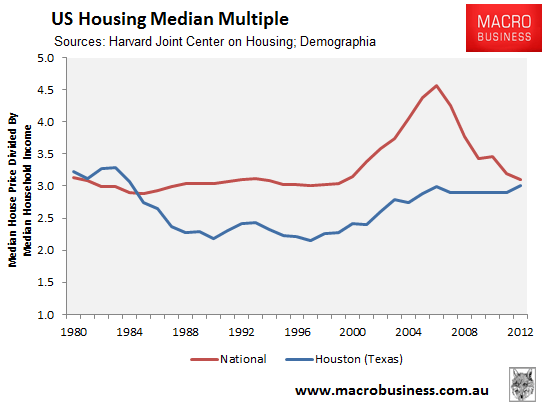
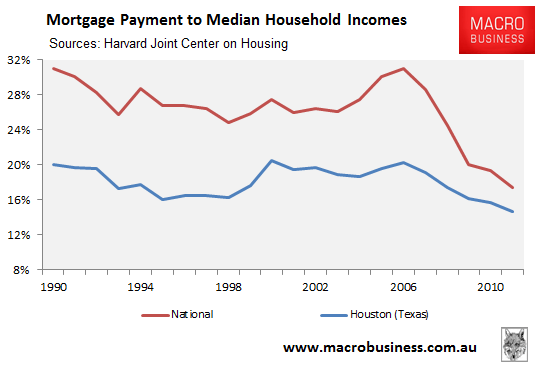
And this affordability has come despite very high population growth:
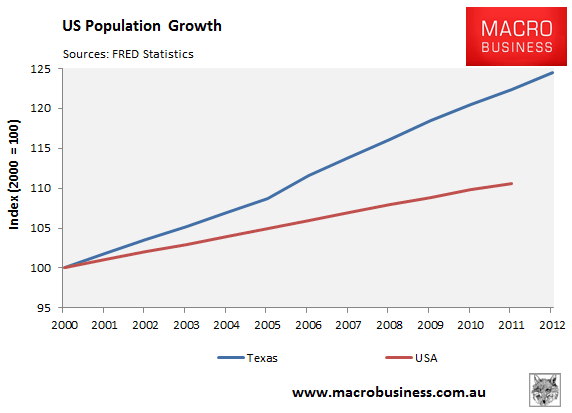
Higher than average income growth:
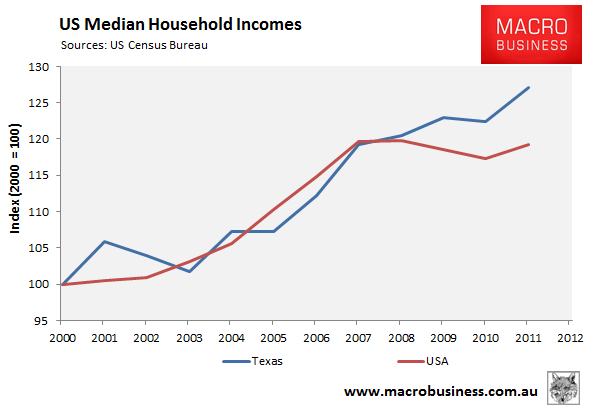
Below average unemployment:
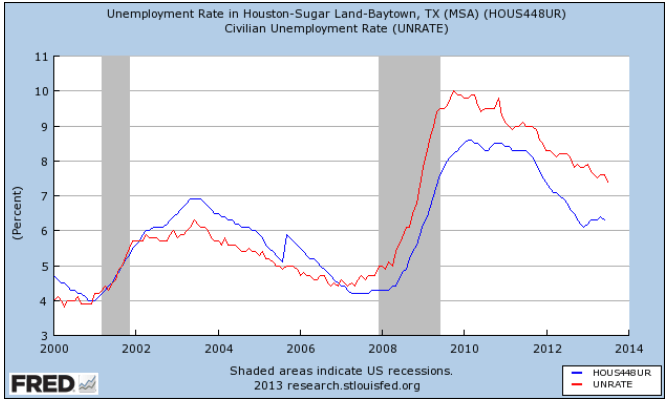
Over the weekend, Reuters published an interesting article explaining the building boom taking place in Houston and how investors and speculators are staying away since there is minimal opportunity for capital gains:
Houston, a sprawling 8,778-square-mile metropolis, has no zoning restrictions, a fact that has some investors including New York-based GreenOak Real Estate Advisors, looking elsewhere to buy.
Owners in areas where building is constrained can reap big rewards when demand for space rises, fueling rent spikes of sometimes 20 percent. That rarely happens in Houston, where developers can easily build.
“When you’re dealing with a market like Houston, there’s nothing to hold developers back,” Ryan Severino, Reis senior economist said. “You can literally can go next door and put up a building.”
This is an important point. When developable land is plentiful and there are minimal regulatory restrictions on development, incentives to speculate and land bank are reduced significantly, since a rival developer always has the ability to build elsewhere or further afield. As a result, land/house prices are kept in check, investor activity focuses more on yield (rather than speculative capital growth), and ‘panic buying’ from first home buyers is non-existent since they always expect affordable homes to be available.
This is why freeing-up the supply-side of the housing market, predominantly via rules giving land owners and developers the “right to build” on unused land (subject to environmental concerns), is key to achieveing a more affordable and stable housing market.

